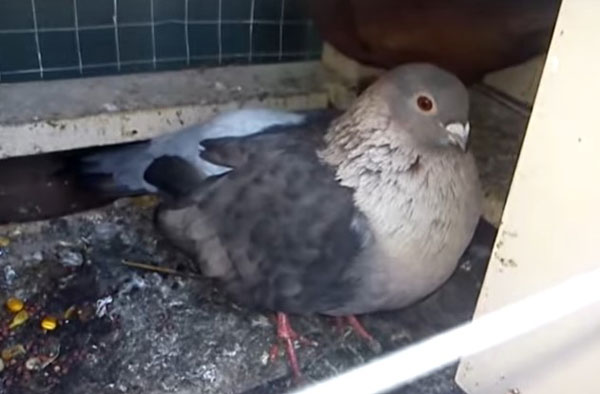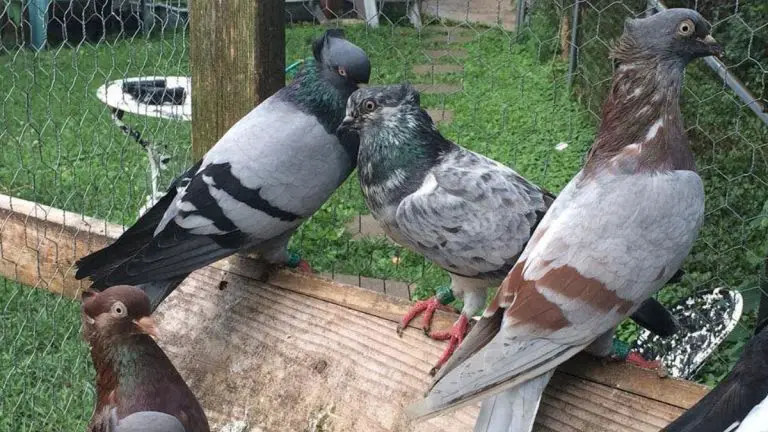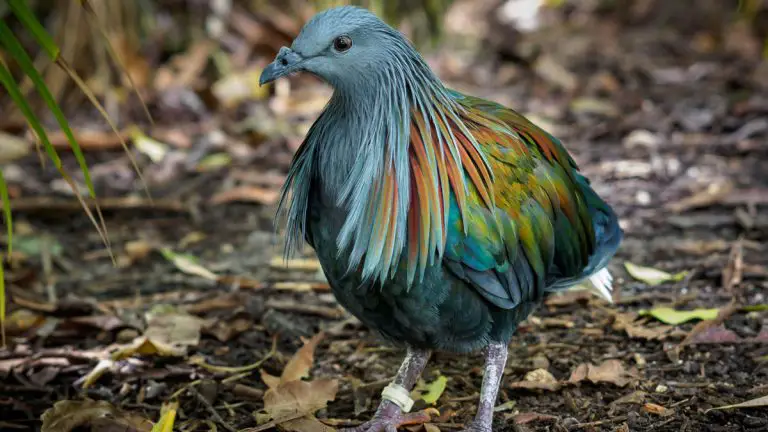Egyptian Swift Pigeon: Origin, Appearance, Behavior, Care, And More
The Egyptian swift pigeon is a fancy pigeon native to Egypt and gets its name due to its resemblance to the swift bird. The bird is an incredibly fast flyer and even participates in racing competitions. Moreover, its unique appearance qualifies it as an ornamental bird. Bird enthusiasts also keep these birds due to their calm and gentle temperament.
Our full guide discusses full information about the Egyptian swift pigeon. We have covered everything from the bird’s history and origins, physical description, behavioral traits, and suitability as a pet. We’ve also discussed care tips for this bird such as housing, diet, health care, and so much more.
Egyptian Swift Pigeon Quick Facts:
| Scientific name | Columba livia domestica |
| Other names | Swift Egyptien, Rondone Egiziano, Agyptischer Segler |
| Breed name | Egyptian Swift |
| Origin | Egypt |
| Breed purpose | Flying, exhibition, pets |
| Size | Medium to Large |
| Weight | Approx. 450 grams |
| Flying ability | Incredibly good |
| Cost | $50 to $200 |
| Lifespan | Around 10 years |
Origin and history
The Egyptian Swift Pigeon, commonly abbreviated as ES, traces its origin to Egypt and is a product of years of selective breeding. This is the reason its name starts with Egyptian.
It gets its second name swift from its resemblance with the chimney swift bird, including a long tail and wings and a short beak.
This breed’s standards date back to the 18th century. Sketches of the bird dating back to this period are even available today.
It was during this period when the local neighborhood groups used to choose experienced fanciers and breeders to help them judge their birds.
Swift pigeons are also referenced in the Mekkatube-Duerigen of 1886.

Renowned pigeon research and geneticist, Dr. W.F. Hollander, also identified the bird in modern documents dating back to 1981.
He states the distinguishing colors, physical characteristics, and colors of up to 12 different swift pigeon varieties.
However, there are flying and show varieties of Egyptian swifts. (more details about these breeds coming up).
The swift pigeons in the modern-day world are available in many varieties, and this is due to selective breeding—with most of it happening in Egypt and in the United Kingdom in the post-1980s.
Modern-day ES is raised for exhibition and flying purposes, though it can also be kept as a pet by pigeon enthusiasts.
Appearance
A mature Egyptian Swift is medium to large sized and weighs approx. 450 grams. The bird is however known to create an impression of being large than it actually is and this is due to its loose and long feathering.
The bird is characterized by a low station and has upright stature when standing on its short legs.
Its body is pretty longhand the head is small and not well-rounded. The head size is generally smaller and not proportional to its long body.
Egyptian swift has a thin, curved neck and a short beak. Its wings and tail feathers are also quite long. Its legs are short and its feet are small.

The ES also comes in a variety of colors. The most common color pattern is the body featuring one color and the wings having a different color.
As we hinted in the previous section, there are two main varieties of this pigeon—the flying and show varieties:
- Flying Egyptian swift: This variety has a narrow and sloped body (around 11 to 13 inches long) with a concave back. It has a pretty small head with a short beak. Its legs are pretty short and not covered with feathers from the hock downwards. The tip of its wings falls slightly shorter than its tail.
- Show Egyptian swift: It doesn’t have a body as feathery and skinny as the show variety. Instead, it has a compacted body that hardly shows loose feathers. The body is 1-2 inches shorter than that of show birds. It has a large head than a show bird. And its legs are medium-sized compared to those of a show bird.
Note that crossing of these two types of birds is quite common in Egypt to help complement each variety. For instance, crossing may help get a flying bird with great flying capabilities while maintaining most of the qualities of the show variety.
This video gives you an idea of what the bird looks like:
Video:
Behavior
Egyptian swift pigeons are not too affectionate but neither are they aggressive, so they can make good pets. Taming your bids from an early age is the surest way to make them more affectionate and open to handling.
The birds are also quite smart and will grasp the simple tricks you teach them. They can also solve puzzles and problems on their own, e.g. they can easily find places to hide in your home.
This breed is also highly active and likes flying, so you should be letting them out regularly to fly and exercise in an unrestricted outdoor space.
You’ll be pleased to know that these birds do quite well at avoiding dangers and predators. However, they do this better when in groups rather than as individuals.
Below is a video of the Egyptian Swift birds taking flight alongside highflyer pigeons
Video:
Diet
Egyptian swift pigeon diet should include a mix of a variety of seeds and grains such as corn, wheat, barley, milo, safflower seeds, millet, etc.
Additionally, supplement their diet with vegetables and fruits. Make sure your pigeons have access to clean and fresh water every day.
Egyptian Swift Pigeon As pets
Though primarily used for racing and show competitions, the Egyptian swift pigeons will also make great pets.
However, you’ll need to meet all the special care requirements of these birds to keep them happy and healthy at all times.
For instance, these birds don’t do well in cold weather. You should therefore ensure you put them in a well-fortified loft to keep away cold weather and harsh elements.
However, the enclosure should still remain airy. And it should be spacious for the birds to fly around and exercise.

Cleaning the housing regularly is recommended to prevent accumulation of diseases causing bacteria, fungi, etc.
Proper diet is another important part of the care you give to this bird (refer to our previous section on the right diet to feed your ES pigeons).
Regular vet checkups are also essential for your Egyptian swift pigeon. This helps keep your bird’s health in check.
Breeding
These birds make good breeders and the whole process is pretty much the same as that of other domesticated breeds.
However, you should be careful about selecting your mating pair to ensure you acquire your desired results.

The good thing is that the breeding result for ES pigeons is highly predictable.
For instance, breeding two bids that look similar means you’ll get offspring that’s almost similar to them.
We also advise you not to breed your birds more than 3 times a year as it can be overwhelming and cause stress to them.
Egyptian Swift Pigeon Price
The price of an Egyptian swift pigeon price ranges from $50 to $200. However, this is just our cost estimation, and the figures can get higher depending on factors such as the bird’s pedigree/lineage, age, health, location, and breeders’ availability.
High-quality birds with desired show qualities and birds from a pedigree that’s known for excellent performance will cost you more. We advise you to only get your pigeons from reputable breeders to ensure you take home healthy and well-cared-for birds.
Lifespan
With proper care, you can expect your Egyptian swift pigeon to last for up to 10 years. Proper care includes giving your birds a healthy and balanced diet, housing them in a spacious and hygienic enclosure, creating opportunities for regular exercising, encouraging socialization with other birds, and having a vet check them regularly to keep them healthy.

Final Verdict
The Egyptian swift pigeon is an incredibly good flyer. It is also a great show bird due to its unique body appearance characterized by long body and fathers and wide color varieties. The bird is named after Chimney swift bird due to its close resemblance to the wild bird.
If you wish, you can also keep this bird as a pet. However, keep in mind that the bird can’t tolerate cold weather, so you should provide it with appropriate housing to keep it warm. Additional care requirements for this bird include a balanced and nutritious diet, regular exercises, and regular checkups by a vet.






